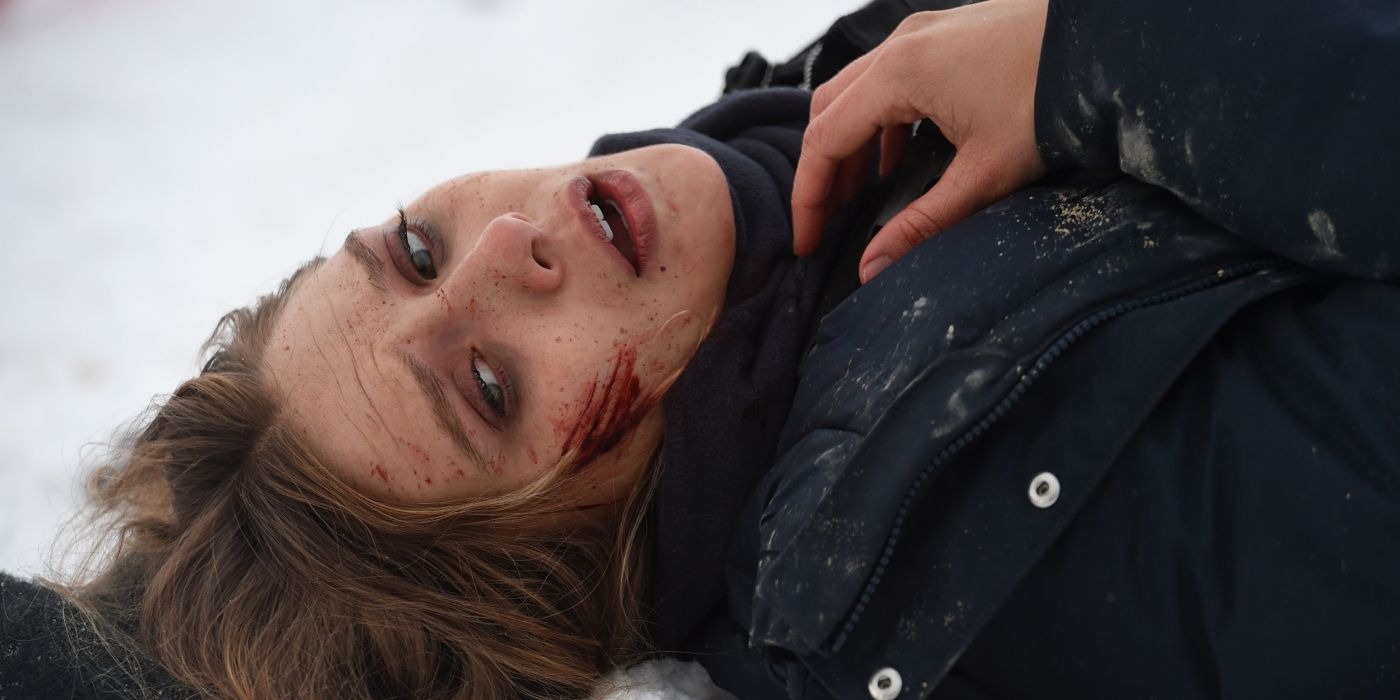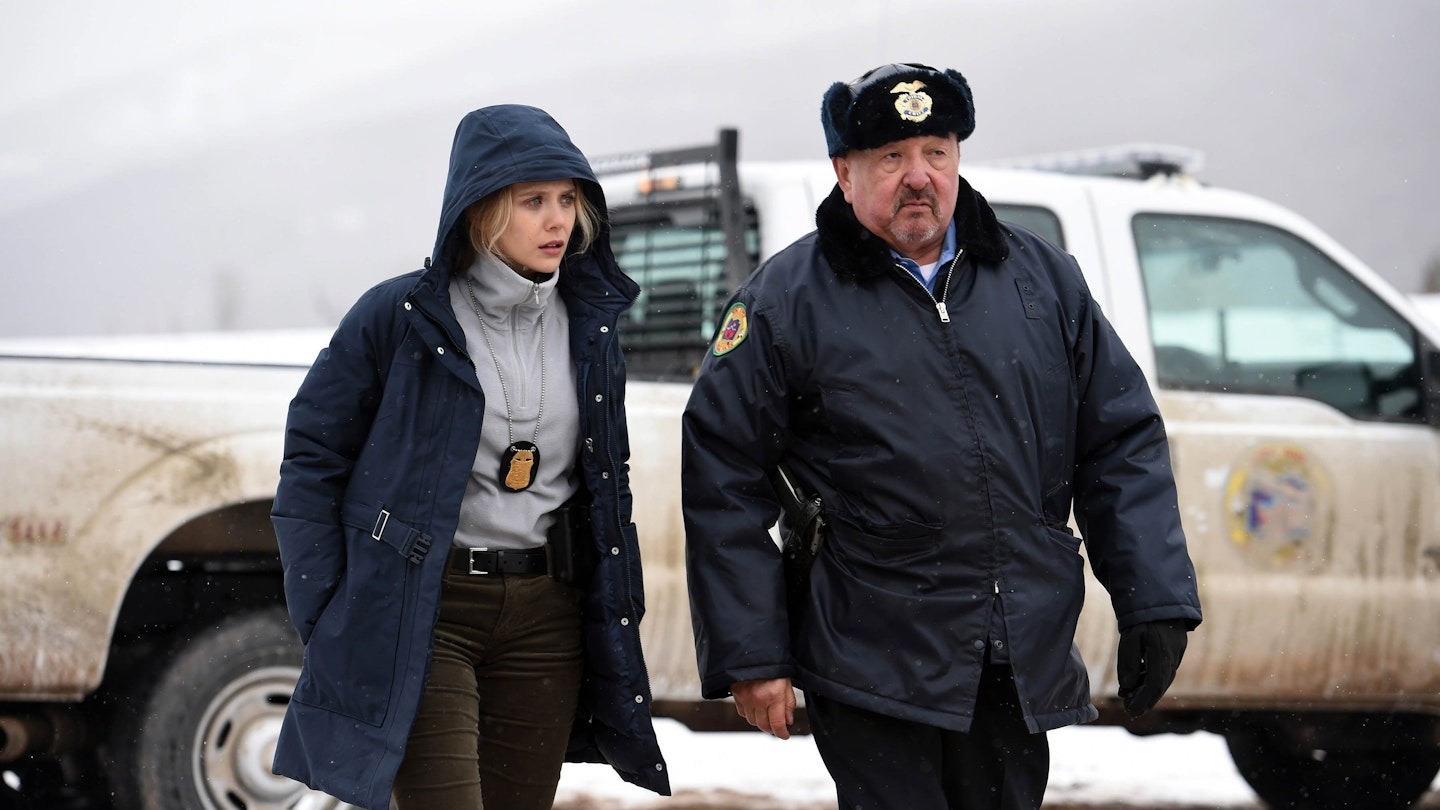Though Taylor Sheridan is now widely recognized for his work on Yellowstone, his career took off with standout screenplays for Sicario and Hell or High Water, and he proved his directorial talent with Wind River in 2017.
The film not only delivered a gripping neo-noir mystery but also cleverly blended in sharp political commentary. While the plot keeps viewers engaged with its chilling crime mystery, Sheridan’s deeper motive lies in drawing attention to the real.

Often overlooked social issues, remarkably, the stark crime statistics he includes towards the film’s conclusion.
What Is Taylor Sheridan’s ‘Wind River’ About?
Wind River centers around a murder investigation on Wyoming’s Wind River Indian Reservation. The body of a teenage girl, Natalie Hanson (played by Kelsey Asbille), is found frozen in the wilderness.
The FBI sends Agent Jane Banner (Elizabeth Olsen) to investigate the case, but the vast size of the reservation and the minimal presence of law enforcement make her task incredibly difficult.
Knowing that she can’t handle the investigation alone, Jane teams up with Cory Lambert (Jeremy Renner), a local U.S. Fish and Wildlife Service agent. Lambert, a skilled tracker, has lived on the reservation all his life. However, his reasons for helping go beyond professional duty—they are deeply personal.
Lambert is a close friend of Natalie’s father, Martin (Gil Birmingham), and promises to bring justice for his daughter’s death. His drive to solve the case is also tied to his tragic past—his daughter was killed a few years prior.
Lambert hopes that solving Natalie’s murder will help him cope with the grief of losing his child. As the investigation progresses, Jane starts to see that the situation is much more complicated than a simple case of murder.
The reservation’s issues are far-reaching, affecting countless Indigenous women whose deaths often go unnoticed by the authorities.
Maybe Sheridan Needs to Reconnect with His Texan Roots
During their investigation, Lambert and Jane stumble upon the decaying body of Matt (Jon Bernthal), Natalie’s older boyfriend.
Matt worked as a security guard at a local drilling site. Although there’s no direct evidence linking him to Natalie’s murder, the discovery leads Jane and Lambert to his former employer in search of more clues.
Their search brings them into conflict with Matt’s coworkers, including Pete Mickens (James Jordan), a shady individual. When the situation turns hostile, Jane and Lambert are forced to defend themselves using lethal force.
Does Natalie Receive Justice in ‘Wind River’?
The confrontation with Matt’s colleagues serves as the film’s intense action climax. Yet, it is a flashback sequence that reveals the tragic details of Natalie’s death. After a fight with Matt, Natalie returned to his trailer, which attracted the attention of his coworkers, including Pete.
Drunk and violent, Pete and the others brutally raped Natalie before killing Matt. Though Natalie managed to escape, she wasn’t able to run far. Alone in the freezing wilderness, she eventually succumbed to the cold before the authorities could find her.

The final standoff sees Lambert, Jane, and the tribal chief, Ben Shoyo (Graham Greene), confront Matt’s coworkers, including his boss, Curtis (Hugh Dillon). The battle is costly—Shoyo and several of his men lose their lives. However, Lambert manages to rescue Jane just in time, eliminating Curtis’ remaining henchmen.
Pete, the only survivor, tries to flee into the wilderness. Seizing the moment, Lambert pursues him to deliver his form of justice. Lambert forces Pete to endure the same fate as Natalie, leaving him to survive in the harsh wilderness with nothing but light clothing for protection.
Lambert makes it clear that Pete lacks the strength that both Natalie and his daughter had. As Pete begs for mercy, Lambert remains unmoved, determined that Pete will face the same suffering that the two young women did. While the mystery of Natalie’s death is solved, the closure does little to ease the pain.
The film ends with a haunting scene of Lambert and Martin, both grieving, knowing that justice has been served, but at an immense personal cost.
Is ‘Wind River’ Based on a True Story?
Sheridan uses this poignant moment to highlight a pressing issue. Although the film’s story is fictional, it draws inspiration from a very real crisis that’s largely ignored by mainstream society.
A title card at the film’s conclusion reveals a stark truth: Native American women who go missing are the only group whose cases are not consistently documented in official records.
The exact number of missing Native American women is unknown, and the situation has become especially dire on reservations, where law enforcement is often limited and resources are scarce.
Wind River stands as one of Sheridan’s darkest and most powerful films. It doesn’t just tell a compelling story; it brings attention to a systemic issue that has long been neglected. Although the film may not be easy to watch, it’s an essential piece of work that forces audiences to confront an uncomfortable reality.
For both fans and critics of Sheridan’s films, Wind River remains an important and eye-opening experience.



